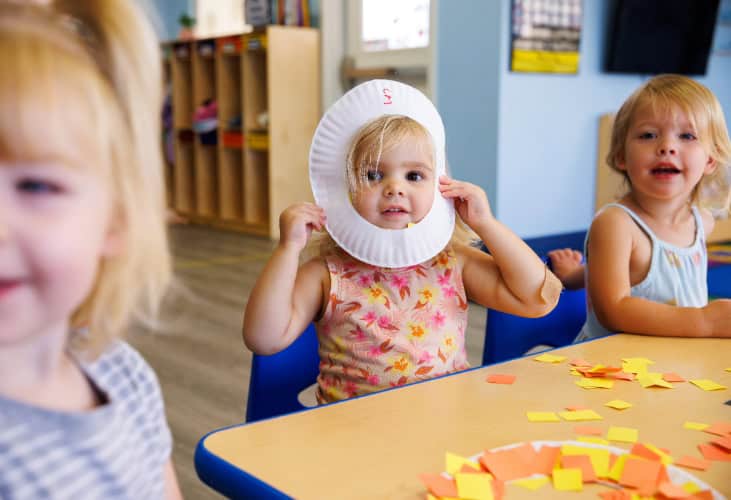
As the leaves change color and the air becomes crisp, fall is the perfect time to bring learning outdoors and explore the wonders of the season. Engaging in children’s science experiments during fall allows preschoolers to explore nature, develop problem-solving skills, and spark their curiosity. With simple preschool science experiments and hands-on STEM activities, you can turn everyday fall moments into magical learning experiences.
Here’s a guide to fun, easy, and educational science experiments that will have your child exploring fall like never before!
1. Leaf Color Change Experiment
Have you ever wondered why leaves change color in the fall? This simple children’s science experiment helps preschoolers understand the science behind it.
What You Need:
- Green leaves (collected from outside)
- Rubbing alcohol
- A glass jar
- Plastic wrap
- A coffee filter
- A small bowl
- Hot water (adult supervision needed)
Instructions:
- Crush the green leaves and place them in a jar.
- Pour enough rubbing alcohol over the leaves to cover them.
- Cover the jar with plastic wrap and place it in a bowl of hot water for about 30 minutes.
- Stir the leaves occasionally. You should notice the rubbing alcohol turning green.
- Cut a strip of coffee filter and place one end into the jar. Leave it for an hour or so to see different colors separate out.
Learning Takeaway: This preschool science experiment shows how chlorophyll breaks down in leaves during fall, revealing other pigments like carotenoids and anthocyanins.
2. Pumpkin Volcano
Pumpkins aren’t just for carving—they can make for exciting science experiments too! Create a pumpkin volcano for a spectacular and safe chemical reaction.
What You Need:
- Small pumpkin (gutted and cleaned out)
- Baking soda
- Vinegar
- Dish soap (optional for more bubbles)
- Food coloring (optional)
Instructions:
- Place the gutted pumpkin on a tray.
- Add a few spoonfuls of baking soda to the inside of the pumpkin.
- Add a squirt of dish soap and a few drops of food coloring (if using).
- Pour vinegar into the pumpkin and watch as it erupts!
Learning Takeaway: This experiment introduces children to chemical reactions, demonstrating what happens when an acid (vinegar) mixes with a base (baking soda).
3. Pine Cone Weather Station
Did you know that pine cones can predict the weather? This hands-on STEM activity allows children to observe how pine cones respond to changes in humidity.
What You Need:
- Several pine cones
- A bowl of water
Instructions:
- Place a few pine cones outdoors and observe their shape.
- Bring them inside and submerge them in a bowl of water for an hour.
- Observe how the pine cones close up when exposed to moisture.
Learning Takeaway: This experiment teaches children about how plants adapt to weather changes. Pine cones close up to protect their seeds from moisture, demonstrating how nature responds to environmental conditions.
4. Apple Oxidation Experiment
Explore what happens when apples are exposed to air with this simple preschool science experiment.
What You Need:
- Sliced apples
- Lemon juice
- Water
- Baking soda solution
- Other liquids for comparison (e.g., milk, vinegar)
- Small bowls
Instructions:
- Dip each apple slice into a different liquid (e.g., lemon juice, water, baking soda solution) and place them on separate plates.
- Leave one slice as a control with no treatment.
- Observe the changes in color over several hours.
Learning Takeaway: This experiment demonstrates oxidation and how certain substances (like lemon juice) can slow down the browning process. It’s a great introduction to chemical reactions and food preservation.
5. Fall Leaf Sensory Bottle
Create a sensory bottle filled with fall leaves to explore colors, motion, and different textures.
What You Need:
- Clear plastic bottle
- Water
- Vegetable oil
- Fall leaves (small pieces)
- Glitter or small beads (optional)
Instructions:
- Fill the bottle halfway with water and add pieces of fall leaves.
- Add a few drops of food coloring, glitter, or beads (optional).
- Fill the rest of the bottle with vegetable oil and seal it tightly.
- Shake the bottle and observe how the leaves move.
Learning Takeaway: This sensory bottle introduces children to density, motion, and the beauty of fall colors in a visually engaging way.
6. Acorn Float and Sink Experiment
Test the buoyancy of acorns and other fall objects in this simple yet fun children’s science experiment.
What You Need:
- A bucket of water
- Acorns, leaves, small rocks, pine cones, etc.
Instructions:
- Ask your child to predict which items will float or sink.
- Drop each item into the water and observe what happens.
Learning Takeaway: This experiment explores concepts of buoyancy and density, helping children understand why some objects float while others sink.
7. STEM Bridge Building with Sticks
Use sticks and other natural materials to build bridges, introducing your child to basic engineering concepts through STEM activities.
What You Need:
- Sticks, twigs, leaves, and other natural materials
- String (optional)
- A small toy to test the bridge’s strength
Instructions:
- Challenge your child to build a bridge that can hold a small toy using only natural materials.
- Test different designs and see which ones are the strongest.
Learning Takeaway: This activity promotes problem-solving, engineering skills, and creativity, all while connecting with nature.
Making Science Fun and Accessible This Fall
Exploring science doesn’t have to be complicated. These children’s science experiments and STEM activities are easy to set up and perfect for fall exploration. By incorporating hands-on learning, you’re fostering curiosity, building critical thinking skills, and making unforgettable memories with your preschooler. So, grab your supplies, head outdoors, and let the fall fun begin!
Looking for more fun preschool activities, experiments, and parenting tips? Join our monthly newsletter for encouragement and inspiration!
